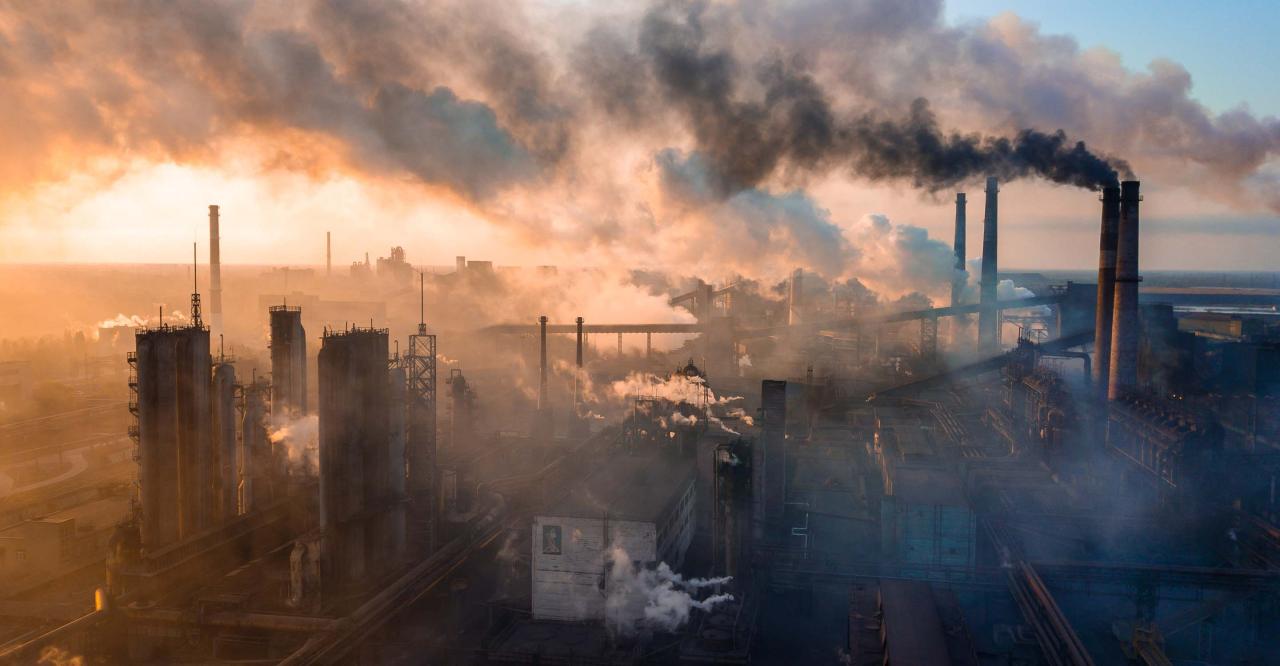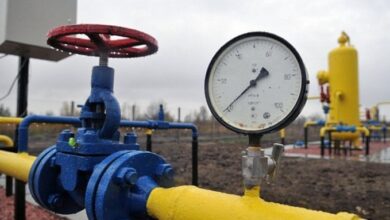
Cleaner Air, Stronger Storms: Declines in Air Pollution Have Made Hurricanes Stronger
Cleaner Air, Stronger Storms: Declines in Air Pollution Have Made Hurricanes Stronger. This might sound counterintuitive, but recent research suggests that decreasing air pollution levels could actually be making hurricanes more intense. While it seems like cleaner air should lead to weaker storms, the complex interplay between air pollution and hurricane formation is a bit more nuanced.
The key lies in aerosols, tiny particles suspended in the air. These aerosols can act as cloud condensation nuclei, influencing the formation of clouds and precipitation. When air pollution levels are high, the abundance of aerosols can actually suppress hurricane development by making clouds less efficient at releasing rain.
However, as air pollution declines, the number of aerosols decreases, allowing clouds to form more readily and release more energy, ultimately leading to stronger hurricanes.
Impact of Declining Air Pollution on Hurricane Patterns: Declines In Air Pollution Have Made Hurricanes Stronger
The relationship between air pollution and hurricane activity is a complex and evolving area of research. While air pollution can have a direct impact on hurricane formation and intensity, the effects of declining air pollution on hurricane patterns are not fully understood.
However, recent studies suggest that declining air pollution could potentially influence hurricane characteristics in various ways.
Potential Changes in Hurricane Characteristics
Decreasing air pollution levels could potentially alter hurricane frequency, intensity, and track patterns. The reduction of aerosols, such as those emitted from industrial activities and vehicle exhaust, can lead to changes in atmospheric conditions that could affect hurricane development.
- Hurricane Frequency:Some studies suggest that declining air pollution could lead to a slight increase in hurricane frequency. This is because cleaner air allows for more solar radiation to reach the ocean surface, leading to warmer sea surface temperatures, which are essential for hurricane formation.
However, the magnitude of this increase is uncertain and could vary depending on the specific region and type of air pollution being reduced.
- Hurricane Intensity:Declining air pollution could potentially lead to stronger hurricanes. Cleaner air allows for more efficient heat transfer from the ocean surface to the atmosphere, which can fuel hurricane intensification. Additionally, reduced aerosols can lead to increased solar radiation reaching the ocean surface, further enhancing the intensity of hurricanes.
It’s a strange twist, isn’t it? Cleaner air, a win for the environment, but also a potential fuel for stronger hurricanes? It’s a complex issue, and understanding the science behind it is crucial. To dive deeper into this fascinating topic, I recommend checking out transcript ronald garza on hurricanes and climate change.
It’s a great resource for learning more about the intricate connection between air pollution and hurricane intensity.
- Hurricane Track Patterns:The impact of declining air pollution on hurricane track patterns is less clear. Some studies suggest that cleaner air could lead to changes in atmospheric circulation patterns, potentially influencing hurricane tracks. However, more research is needed to fully understand the relationship between air pollution and hurricane track patterns.
It’s fascinating how the seemingly unrelated topic of air pollution can have such a profound impact on the intensity of hurricanes. The reduction in air pollution, while beneficial in many ways, has led to stronger storms, a consequence that underscores the intricate interconnectedness of our planet.
This kind of complex interaction is exactly what’s explored in the analysis of Turkey and NATO through the lens of the Anna Karenina principle of alliances , where a single point of failure can unravel an entire system. Just like a small change in air pollution can lead to bigger storms, a single flaw in an alliance can lead to its collapse.
It’s a reminder that understanding the nuances of complex systems is crucial to predicting and mitigating future challenges.
Impact of Declining Air Pollution on Different Hurricane Basins
The impact of declining air pollution on hurricane characteristics can vary depending on the specific hurricane basin. For example, the Atlantic hurricane basin has experienced significant reductions in air pollution in recent decades, and some studies suggest that this may have contributed to the increase in hurricane intensity observed in this region.
It’s fascinating how seemingly unrelated events can be interconnected. We’ve been hearing about how declines in air pollution have made hurricanes stronger, and while that might seem like a climate-related issue, it reminds me of the recent news about how Binance built ties to an FSB-linked agency.
It’s a stark reminder that even seemingly unrelated events can have far-reaching consequences, especially when it comes to global issues like climate change and financial security.
However, it is important to note that other factors, such as natural climate variability, can also influence hurricane activity.
- Atlantic Hurricane Basin:Declining air pollution in the Atlantic has been linked to increased hurricane intensity, with some studies suggesting a possible connection to the increase in Category 4 and 5 hurricanes observed in recent decades. However, other factors, such as changes in sea surface temperatures and atmospheric circulation patterns, also play a role.
- Eastern Pacific Hurricane Basin:The Eastern Pacific hurricane basin has also experienced declining air pollution levels, but the impact on hurricane activity is less clear. Some studies suggest that declining air pollution may be contributing to an increase in hurricane frequency, but more research is needed to confirm this.
- Western Pacific Hurricane Basin:The Western Pacific hurricane basin is the most active hurricane basin in the world, and it has experienced significant air pollution levels. While declining air pollution in this region could potentially lead to changes in hurricane characteristics, the effects are likely to be complex and difficult to isolate.
Potential Changes in Hurricane Characteristics Based on Varying Levels of Air Pollution, Declines in air pollution have made hurricanes stronger
The following table illustrates the potential changes in hurricane characteristics based on varying levels of air pollution:
| Air Pollution Level | Hurricane Frequency | Hurricane Intensity | Hurricane Track Patterns |
|---|---|---|---|
| High | Lower | Weaker | More variable |
| Moderate | Moderate | Moderate | More predictable |
| Low | Higher | Stronger | More predictable |
It is important to note that this table is a simplified representation of a complex relationship and should not be interpreted as definitive predictions. Further research is needed to fully understand the impact of declining air pollution on hurricane patterns.
Societal Implications and Future Research
The revelation that declining air pollution could potentially be strengthening hurricanes presents a complex challenge for societal preparedness and mitigation strategies. While cleaner air is generally a positive outcome, the unintended consequence of more powerful storms demands a comprehensive understanding of the interplay between air pollution and hurricane intensity.
This knowledge is crucial for adapting existing strategies and developing new approaches to ensure the safety and well-being of communities.
Implications for Hurricane Preparedness and Mitigation
Understanding the link between air pollution and hurricane strength necessitates a re-evaluation of existing preparedness and mitigation strategies. The traditional focus on strengthening infrastructure and improving evacuation procedures may need to be adjusted to account for the potential increase in hurricane intensity.
- Enhanced Forecasting and Warning Systems:Improved models and data analysis are required to incorporate the influence of air pollution on hurricane development and intensity, allowing for more accurate and timely warnings. This can involve integrating real-time air quality data into hurricane forecasting models to better predict storm strength and trajectory.
- Strengthened Infrastructure:Building codes and infrastructure design need to be reevaluated to withstand the potential impact of more intense hurricanes. This may involve adopting stricter building standards, reinforcing critical infrastructure, and developing new technologies for storm surge protection.
- Community Education and Awareness:Public awareness campaigns should emphasize the potential for more intense hurricanes due to declining air pollution. This education can empower individuals to take proactive measures to prepare for storms, such as stockpiling emergency supplies, developing evacuation plans, and understanding the risks associated with hurricane-related hazards.
Key Areas for Future Research
The complex relationship between air pollution and hurricane strength necessitates further research to gain a deeper understanding of the underlying mechanisms and potential long-term impacts.
- Impact of Different Air Pollutants:Research should investigate the specific role of different air pollutants in influencing hurricane intensity. For example, examining the impact of aerosols, such as sulfates and black carbon, on hurricane formation and development could provide valuable insights into mitigation strategies.
- Long-Term Trends and Projections:Long-term monitoring of air pollution levels and hurricane activity is crucial to assess the potential impact of declining air pollution on future hurricane trends. Analyzing historical data and developing predictive models can help forecast the potential increase in hurricane intensity and inform adaptation strategies.
- Regional Variations and Local Impacts:Investigating the regional variations in the relationship between air pollution and hurricane strength is essential. Different geographic regions may experience varying levels of air pollution and hurricane activity, requiring tailored preparedness and mitigation strategies.
Final Thoughts

The relationship between air pollution and hurricane strength is a complex and evolving field of study. While cleaner air is undoubtedly beneficial for human health and the environment, the potential for stronger hurricanes due to reduced air pollution is a concern.
Further research is crucial to fully understand this intricate connection and develop effective mitigation strategies for both air pollution and hurricane risks.






